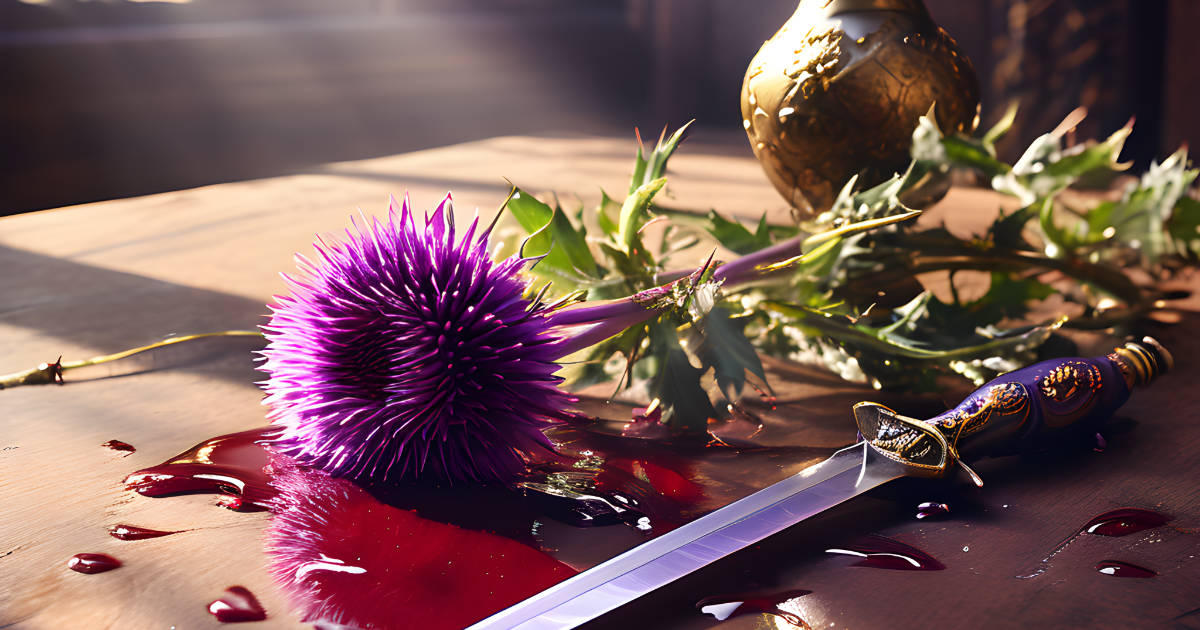Just because you have a sword in one hand, doesn’t mean the other hand is useless. Your offhand is actually one of the most useful tools at your disposal. For consistency’s sake, your offhand will always refer to your non-dominant hand whether it’s holding something or not. Learning to use your offhand is a critical skill so dedicate time to developing your offhand skills.
Points of safety
With sturdy gloves on hand, you’re ready to reach into the fight and put that offhand to work. They may take a bit of a beating, but these safety points will keep the worst off and protect those fingers.
- No Grabbing: It is not permitted to grab your opponent’s weapon in any way, either the guard or the blade. Grabbing a weapon includes any time your fingers close around the blade or lock the blade in a position that can’t be wiggled out of.
- Use Your Palm: When using your Offhand it is best to use the palm of your hand to control your opponent’s blade. While still legal, using the back of your hand is not recommended because it is painful due to a lack of padding.
General Points
The trickiest part of using your offhand is remembering that it’s even there. You can get so focused on the sword and everything going on there that your hand might get left out entirely. So let’s keep things simple with these general principles and you can get fancy once your offhand becomes second nature.
- Basic Hand Position: The basic hand position for your offhand is out in front of your chest, but with your elbow bent. Far enough that it can move freely, but not so far that your arm is extended. Imagine you were going to catch a ball with one hand. That can give you a good place to start.
- Windshield Wiper: After finding that basic hand position, moving your hand is as simple as waving. Imagine it like a windshield wiper, pushing the blade up and away from your body in an arc. If possible, do everything you can to push the blade away from your body and not in front. You don’t want a strike to slip past and hit you.
- Maintain Contact: Now that your hand is moving, remember that you’re blocking swords and not swatting mosquitos. As you block, don’t swat the sword away but maintain contact and push it where you want it to go. By maintaining contact, you’ll feel their sword in your hand and can better follow it as they try to get away.
- Beware of Draw Cuts: The longer you maintain contact though, the higher your risk of a Draw Cut. We’ll cover Draw Cuts in a future lesson, but essentially an opponent can slide their blade across your hand in a “cut” and cause you to lose your hand. If you think they might start a draw, pull your hand away quickly or acknowledge the cut after it happens.
- Accidental Grab: In the event that you accidentally grab an opponent’s weapon or hilt, you can voluntarily lose your hand or take it as a kill. It’s a point of chivalry that isn’t necessarily required but demonstrates that you’re focused on safety and honor first.
Training Ideas
- Look, Mom! No Sword!: Grab a partner, but set your sword aside. Using only your offhand, stay alive as long as you can while your partner strikes at you. Start out slow with consistent targets but eventually work yourself up to full speed. If you want you can use both hands or limit yourself to a single hand.
- Don’t Let It Get Away: With a partner, position yourself with your offhand already in contact with their blade. At the lay-on, try to maintain contact as your partner tries to free their sword from your hand. Time yourself and see how long you can keep in contact. Don’t be afraid to move, but try to maintain good footwork and positioning.
- Wave At The Opportunity: Facing a partner, take turns striking each other and defending with your offhand. As you block, pay attention to any openings you have after the block.
- Wiggle Your Fingers: If you struggle remembering your offhand is there, practice wiggling your fingers. Go into a couple of duels and don’t let yourself stop wiggling your fingers. You’ll be surprised how much more aware you are of your offhand as you keep that connection to them open.
Assessment
What we’re looking for are fencers who can incorporate their offhand in their fighting. You should be able to control yourself not to grab blades, and know what to do if that accidentally happens. We want to see fencers who have their offhand out in front of them, actively using it to defend and control their opponent’s blade. Your offhand is a valuable tool, so keep working on it until it becomes a natural part of every fight.

